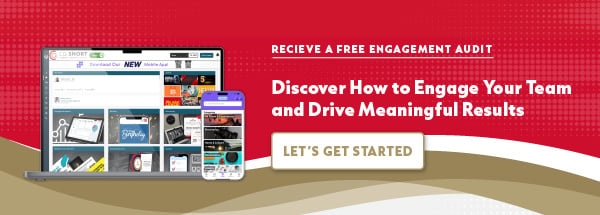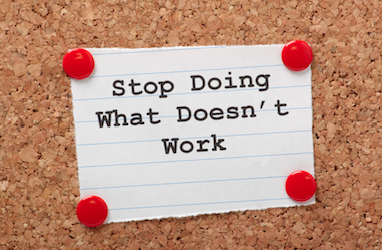Is Your Employee Engagement Program Working Hard or Hardly Working?

Working in the employee recognition industry, my family and friends often share stories with me regarding failed employee recognition and engagement strategies that their organizations have, in good intentions, attempted to launch.
Those conversations usually go something like this, "The first few months of the program were great, but I haven’t heard a word about it since July.”
This one is a common, too, “I see it working in some departments, but not everyone believes in it.”
My personal favorite is, “If they don’t practice what they preach, they should just give us all a raise instead of wasting money on this initiative.”
Ouch.
Two Essential Elements of Employee Recognition
While this wasn't the intended goal of these companies, these honest words spoken can be used as a tool to improve employee recognition programs. We’ve all heard the phrase, “The road to hell is paved with good intentions.” Whether your organization is launching a new employee engagement program, trying to revamp an old one or simply brainstorming ideas on how to get started, no one wants any project to fail.
Often, we as leaders can't fathom that an employee wouldn't immediately embrace the program. We take for granted that everyone will just “get it” because we do. We assume that the right technology or our passion for the project will be the thing that ensures success.
Unfortunately, this doesn’t hold true. We need more than an abstract idea and pretty interface. To make an employee engagement program or any new initiative for that matter, true success you will need to begin with two essential elements:
1. Upper Management Buy-In
Upper management being totally committed to the employee recognition program seems pretty straightforward doesn’t it? It’s not always that easy. Creating a true culture of recognition and engagement must begin at the top.
Allocating a budget is starkly different that being bought into something. Upper management should fully understand the purpose, meaning, and results of the program. They should be the face of the program and actively participate in the process.
2. A Comprehensive Communication Plan
In my experience, this is where organizations stumble the most when implementing any new program or development. Simply putting up a poster, making an announcement, or having a huge launch party is not an effective communication plan. A strategic, comprehensive communication plan needs to be consistent, ongoing, relevant, and multi-channeled.
This means that the communication plan needs to be:
- Long term and consistent
- Pertinent to the organization at the time of the message
- Communicated in multiple and diverse forms
Employees do not communicate and learn the same way. Communications can be made via hard copy letters, posters, emails, video, one-on-one’s, or at departmental meetings. No matter how your organization chooses to communicate changes to employees, it needs to be multi-faceted and constant.
Once you have these two elements working for you, the other aspects of developing an employee engagement program should be fun. You are now free to enjoy both the process and reward of your efforts!
 At C.A. Short Company, we are your partner for increased employee engagement resulting in increased performance outcomes to grow your bottom line. Our process and research-based platform helps you engage your team in order to increase your bottom line, motivate your staff to the benefit of the entire organization, and reward your people for the positive changes they make. To request a Complimentary Consultation, please click here.
At C.A. Short Company, we are your partner for increased employee engagement resulting in increased performance outcomes to grow your bottom line. Our process and research-based platform helps you engage your team in order to increase your bottom line, motivate your staff to the benefit of the entire organization, and reward your people for the positive changes they make. To request a Complimentary Consultation, please click here.



.jpeg)

.jpg)



SHARE